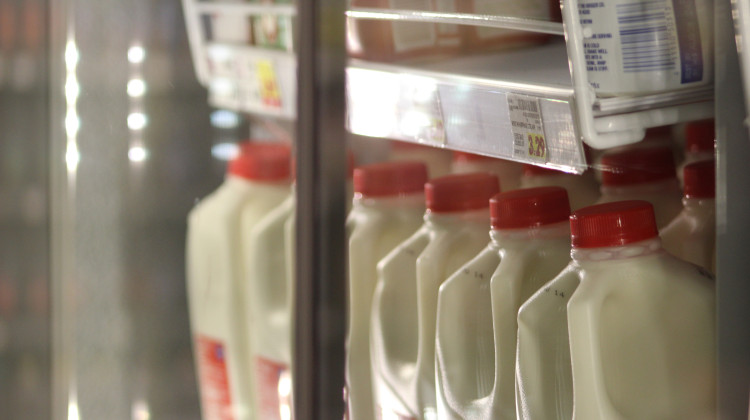
The U.S. Food and Drug Administration found H5N1 viral fragments in one in five retail milks at grocery stores. But that virus is not active and scientists say its been neutralized by pasteurization.
Ben Thorp / Side Effects Public MediaThe H5N1 bird flu has been common across wild bird populations for the last few years. It led to the culling of millions of chickens in the United States.
Now, in sort of a plot twist, the virus has been found in dairy cows for the first time this March. There’s also been one documented case of bird flu in humans.
Lizzy McGrevy, Side Effects Public Media’s community engagement specialist, spoke with Health Reporter Ben Thorp to discuss the bird flu’s transmission, risks, and impact on food.
This transcript has been edited for length, style and clarity.
Lizzy McGrevy: Ben, I have heard a lot of rumors about milk and I need an answer: should I still be requesting whole milk in my lattes?
Ben Thorp: The FDA recently put out a survey that found one in five retail milks at the grocery store have some signs of the virus. But that virus is not active and scientists say it’s been neutralized by pasteurization. That’s a standard process where milk is heated up before being sold on commercial shelves.
“The Centers for Disease Control [and Prevention], and the Food and the Drug Administration which oversees dairy inspection in the United States has not expressed any concern about the safety of our milk,” Denise Derrer Spears with the Indiana State Board of Animal Health said.
It may be worth mentioning here –– there are always risks associated with consuming unpasteurized milk. And that is especially true now in the midst of this outbreak.
McGrevy: That’s milk - what about other animal products? Should I be worried about beef? What about chicken? Eggs?
Thorp: So, the U.S. Department of Agriculture’s food and safety service sampled ground beef from some of the states where dairy cows have tested positive for the virus. As of May 1st, those tests had all come back negative for the H5N1 influenza virus.
Animals are tested before and after slaughter, so the chance of contaminated meat or eggs is very low according to some of the researchers I spoke to.
Birds show very clear signs of an infection and many die, making it unlikely that a contaminated chicken would make it into our food supply unnoticed. Part of why we think so much of the milk has been contaminated is because there may be cows that aren’t showing symptoms but are still shedding the virus into milk.
The USDA of course recommends proper handling and cooking of meats –– that’s always important to mention.
McGrevy: So, right now what is the overall risk to human health?
Thorp: The thing to know is that one dairy worker in Texas did become infected with H5N1. iIt showed up as a case of pink eye with no accompanying respiratory symptoms.
The CDC has since advised daily workers to wear protective gear when coming into contact with sick animals.
A recent NPR report interviewed some experts worried that we may not be testing enough people who work with farm animals to know the extent of the spread.
But, overall, at this time, the danger to humans is low.
Virologist Richard Webby at St. Jude’s Children’s Research Hospital in Tennessee said H5N1 is still primarily a bird virus.
“Still, right now the risk for humans is considered to be low. But the more opportunities we get for this virus to sort of try out different hosts, evolve within that host, the more contact there is between an infected animal and humans –– that does raise that risk,” he said. “So, although it’s low, I think the risk has gone up a little bit just because now there is more contact between people and an infected animal. There are clearly more people that are close to dairy cows than there are to wild birds flying up and down above our head.”
McGrevy: Well thanks for talking to me Ben.
Thorp: Thank you.
McGrevy: If you have questions you can always write into us and we will try to find experts to answer your questions next time on The Checkup.
The Checkup by Side Effects Public Media is a regular audio segment on WFYI's daily podcast, WFYI News Now.
Side Effects Public Media is a health reporting collaboration based at WFYI in Indianapolis. We partner with NPR stations across the Midwest and surrounding areas — including KBIA and KCUR in Missouri, Iowa Public Radio, Ideastream in Ohio and WFPL in Kentucky.
 DONATE
DONATE








 View More Programs
View More Programs

 Support WFYI. We can't do it without you.
Support WFYI. We can't do it without you.